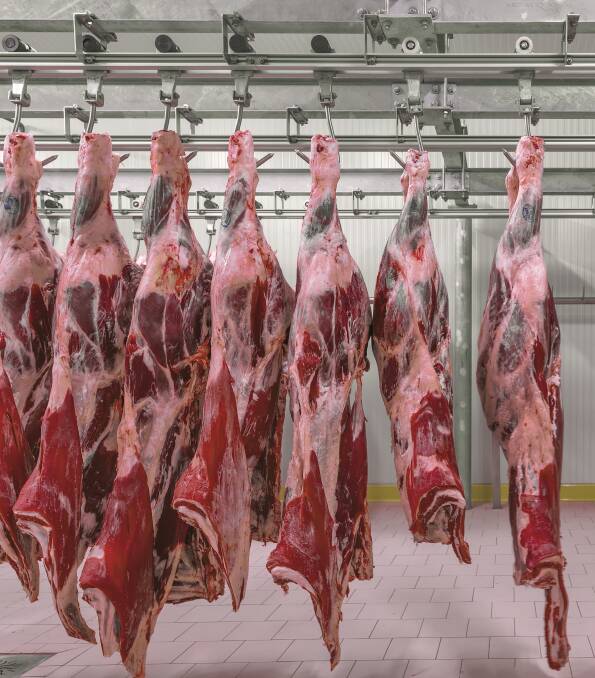
A MONTH ago, this column highlighted the record November beef shipment to China from Australia of 34,000 tonnes and the trajectory of China becoming Australia's biggest beef export customer by year end.
Subscribe now for unlimited access to all our agricultural news
across the nation
or signup to continue reading
With December export figures from Department of Agriculture revealing yet another 34,000t month, it is now confirmed that for calendar year 2019, China was Australia's biggest beef customer by volume with a total shipped weight of 300,132t.
Closest rival Japan ended the year on 287,495t, the Unites States on 251,821t and Korea on 162,343t.
Of the 300,000t, a little over 270,000t or 90 per cent was frozen beef which suggests cow slaughter has played a major role in supplying this market.
The fact that 73pc of the beef that went to the US was also frozen amplifies this point.
In 2018 we thought the Australian herd was in steep liquidation when the percentage of females in the kill spiked up to 53.7pc in June and averaged 50.8 for the year.
That was predicated on the belief that low 40s usually indicate strong herd growth and mid-to-high 40s a neutral herd position.

But a peak female-kill percentage of 58.2 in May and June this year and a 10-month average to October of 55.7 indicates liquidation has stepped up into overdrive.
The bit of rain in October dropped the kill percentage to 50.4 for that month but that is looking like an aberration and the expectation is that November and December figures when they become available will show a return to mid-50s.
The sheer number of females killed in 2019 does not bode well for supply going forward and should have analysts reworking their estimates of how low the herd size has fallen to.
With little rain expected in January and carry-over bookings from December, the year should kick off with numbers out front but come February that could change.
The positive Indian Ocean Dipole, which has resulted in flooding in South Africa and Indonesia and drought in Australia, has now weakened to neutral and is encouraging the idea that rain may come in late summer.
Late last year we saw one central Queensland works struggle to maintain a full kill and having to resort to pulling cattle all the way up from NSW markets to supplement supply.
If it rains in February it will be much more than a struggle to fill some gaps in the kill.
Processors spoken to throughout the course of last year are anticipating serious down time and loss of production when the rain does come. Cattle prices will rise but to what extent remains to be seen.
Processors know that the point will be reached when putting more money out will not result in any more cattle coming forward.
A peak female-kill percentage of 58.2 in May and June this year and a 10-month average to October of 55.7 indicates liquidation has stepped up into overdrive. The sheer number of females killed in 2019 does not bode well for supply going forward and should have analysts reworking their estimates of how low the herd size has fallen to.
All they can do in those circumstances is match slaughter capacity as best they can to available supply.
The store market will be another matter but at least those now in the market for replacements experienced much better prices in the sell-down phase than has been the case in most previous droughts. Heavy herd liquidation is not normally associated with good prices and that is another measure of just how influential China's dramatic rise in demand has been in the past 12 months.
United States up, Japan and Korea down
IT is most unusual for December to represent the biggest beef export volume month of the year.
Another record volume of 34,291t to China in December and an interesting rebound in the US market of 28,720t have driven total beef exports for the month to 115,688t.
That is 12,000t up on November and a whopping 25,000t up on same month the previous year and takes the total for the year to 1,228,963t, up by 9.2pc on 2018.
In the past decade, only the drought liquidation years of 2014 and 2015 saw beef exports exceed 1.2 million tonnes and at that time the herd was only into its second year of drought after fully rebuilding over three years to somewhere around 30 million head.
It is quite remarkable therefore to see this volume of beef derived from a herd decimated by seven years of drought.
On the surface, the rebound in US tonnage from 13,000 in November to 28,000 in December encourages speculation that the wild market gyrations in November and December might have been implicated.
The spectacular price rise from US$249/cwt (100lbs) to US$309 for Aust/NZ 90CL in November retreated in equally spectacular fashion in December with confirmed reports of Chinese buyers reneging on high-priced deals and either seeking to renegotiate or cancelling.
But apart from the unsettling effect on Australian and NZ traders, this probably had little to do with volumes shipped in those months. Rather, it would seem more likely that the explanation lies with shipping schedules and possibly end-of-year aberrations in data collection. Added together, the November/December tonnages average out at the same monthly rate that has occurred consistently throughout the year.
Overall, the US market was up by almost 9pc in 2019. Japan and Korea, on the other hand, were down by 9pc and 4.7pc respectively. Japan is particularly worrying as tonnage has been in negative trend for virtually all of 2019.
At the same time, US beef exports to Japan were down by just 6pc despite significantly higher tariff rates than those enjoyed by Australia (and other TPP countries).
But that changed last Wednesday when the limited US/Japan trade deal came into effect, bringing the US into line with Japan's TPP trading partners. The US reported sharply elevated export volumes to Japan in November/December for entry post January 1.
Korea meanwhile was the top growth market for the US in 2019 at an increase of 7pc.
It must be galling for Australian operators to be effectively locked out of sharing some of the growth opportunity in this market particularly at a time when things look like getting a whole lot tougher in the Japanese market.

